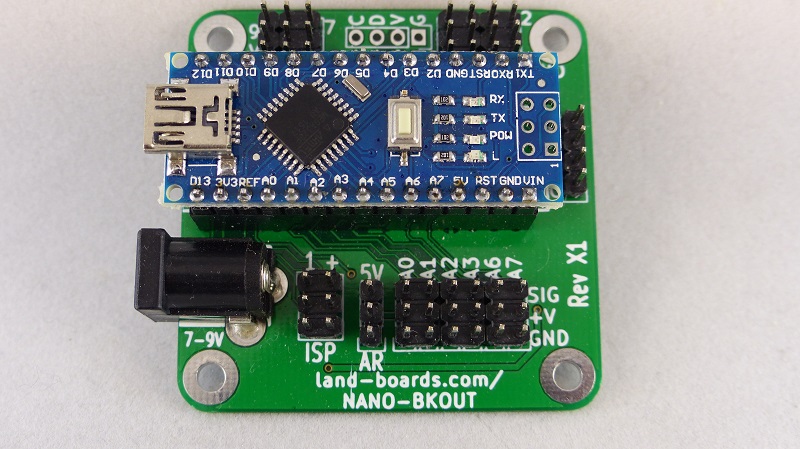Difference between revisions of "NANO-BKOUT"
Jump to navigation
Jump to search
Blwikiadmin (talk | contribs) |
Blwikiadmin (talk | contribs) |
||
| Line 1: | Line 1: | ||
[[File:tindie-mediums.png|link=https://www.tindie.com/products/land_boards/nano-breakout-card/]] | [[File:tindie-mediums.png|link=https://www.tindie.com/products/land_boards/nano-breakout-card/]] | ||
| + | |||
| + | == Arduino Nano Breakout card == | ||
| + | |||
| + | This card breaks out a Arduino Nano (not supplied with NANO-BKOUT card) into GVS (Ground-Voltage-Signal) headers for easy connection to external sensors. | ||
[[File:NANO-BKOUT-P1010078-800px.jpg]] | [[File:NANO-BKOUT-P1010078-800px.jpg]] | ||
Revision as of 14:18, 10 January 2020
Arduino Nano Breakout card
This card breaks out a Arduino Nano (not supplied with NANO-BKOUT card) into GVS (Ground-Voltage-Signal) headers for easy connection to external sensors.
Features
- Breakout card for the Arduino Nano
- NANO (not supplied) is:
- Inexpensive ($6-$7 US, $2.50 China), multiple sourced part
- 5V, 16 MHz
- Installs onto female header/removable
- DC regulator
- Microprocessor ATMega328 Comparable with Arduino UNO
- Mini USB connector
- Reset switch
- NANO-BKOUT has
- DC Power Jack
- GVS connections for most digital/analog signals
- Ground and power connections for each digital lines simplify power distribution to external functions such as sensors
- Additional analog input signals (over the Arduino UNO)
- ICSP (In-Circuit System Programmer) header
- I2C header
- Aref voltage selection header
- Direct connection to MyMenu card
- I2C Interface
- D6 connection for interrupt line
- Located in mirrored location on both boards to allow the MyMenu to mount to the rear
- 49x49mm form factor
- (4) 4-40 mounting holes for installation into enclosures
- Rounded corners to allow card to be installed into enclosure corners

